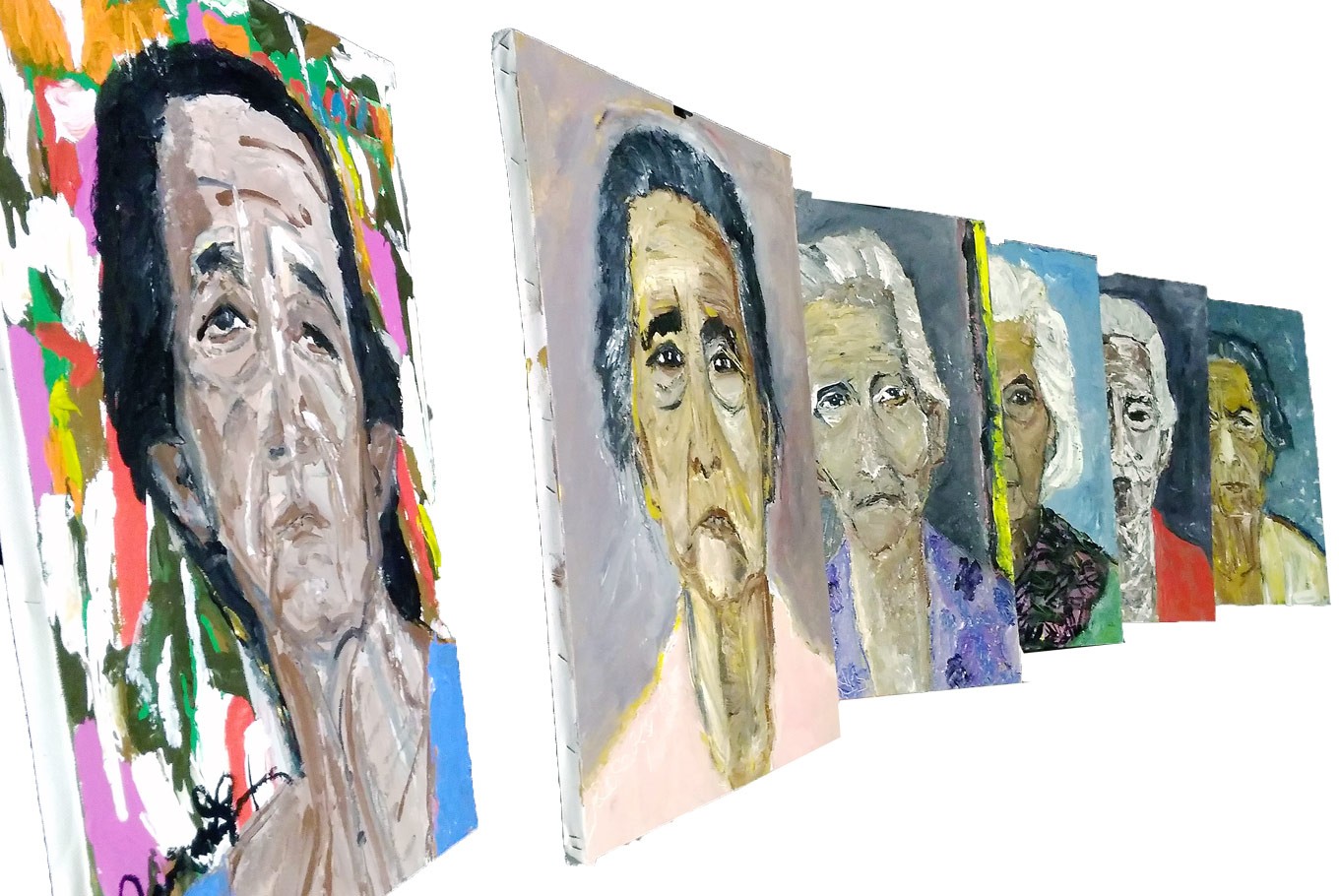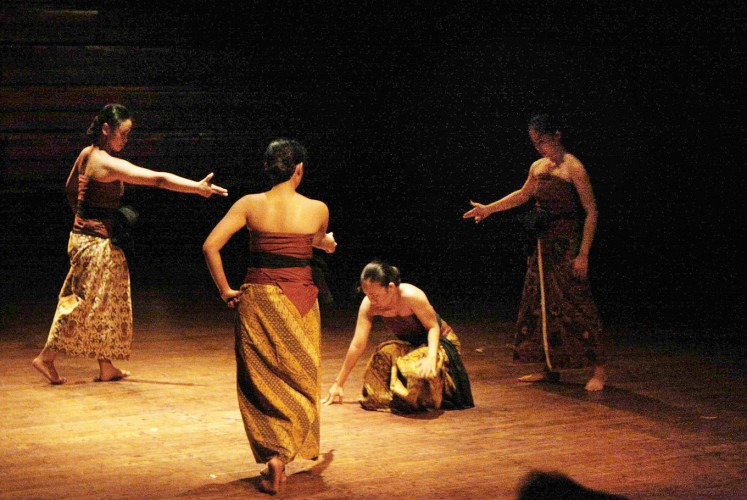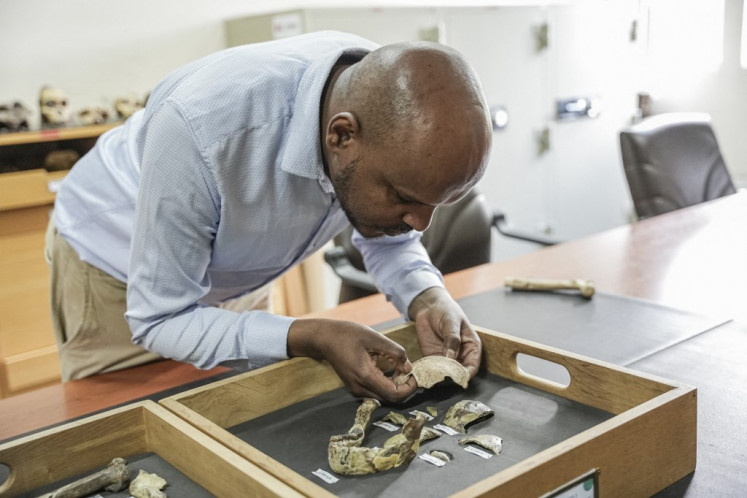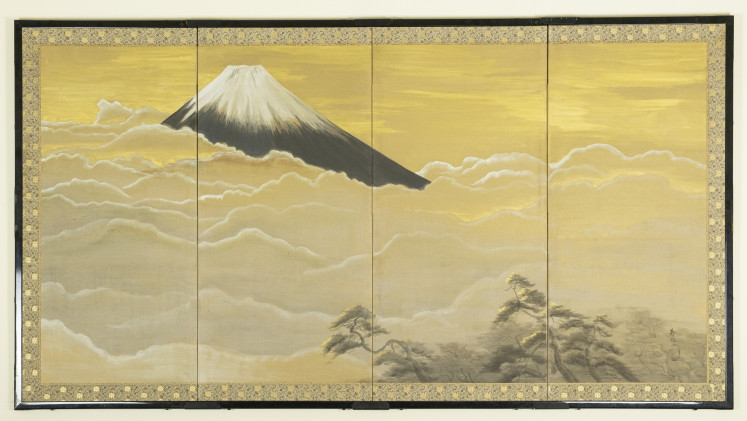Popular Reads
Top Results
Can't find what you're looking for?
View all search resultsPopular Reads
Top Results
Can't find what you're looking for?
View all search resultsJava's gloomy history of Ianfu in portraits
Ianfu has become a historical episode that is yet declared or possibly covered up.
Change text size
Gift Premium Articles
to Anyone
N
gadirah, an 80-year-old Ianfu survivor, talked about the horror she faced during the Japanese occupation before dozens of audience who gathered in a recent discussion to commemorate the firth International Ianfu Day at the Central Java Cultural Park (TBJT), Surakarta, Central Java.
“Young women were reduced to a total wreck. All my peers and I could do nothing. If the Indonesian government can’t take it, just go ahead. But if the government accepts such treatment, I have no choice,” Ngadiah said in Javanese.
Ianfu is the term of address for comfort women in Japanese. However, visual artist and women’s movement activist Dewi Candraningrum said this meaning is in fact misleading because the women were forced to serve as prostitutes against their own will. The young females weren’t just Javanese but also those from Japanese occupied countries, abducted from their homes and lured by job offers.
Read also: Honoring our former military sex slaves
These women were then sent to Japanese military brothels or lanjo. The buildings used for this purpose were mostly former dormitories left behind by the Dutch in Indonesia or local people’s houses deliberately vacated by the Japanese.
“After their capture, they were locked up and put to use to satisfy the lust of Japanese soldiers. I think the word Ianfu should be fairly chosen to describe their condition under the system of sex slavery,” Dewi said.
Dewi, who is also a lecturer at Muhammadiyah University, Surakarta (UMS), said the public still has minimum knowledge on the brutal practice, which has been declared as a war crime by the international community.
The discussion, along with Dewi’s painting exhibition and two repertories from choreographer Dwi Surni Cahyaningsih entitled Ianfu and Kamar 11(Room 11), serve as a reminder to the public and the government on the presence of Ianfu.
Dewi’s solo painting exhibition, titled Dokumen Rahim (Document of Compassion), presented 24 acrylic-painted canvases and shawls portraying Javanese women forced to serve as Ianfu or sex slaves by Japanese soldiers during 1942-1945.
Under pressure: A repertory of the Ianfu dance by choreographer Dwi Surni Cahyaningsih depicts the suffering of women forced to serve as sex slaves during the Japanese occupation of 1942-1945. (JP/Ganug Nugroho Adi)It was unveiled the cruelty of sex slavery. The 24 portraits were displayed in close rows, some bearing names such as Mardiyem, Sumirah, Emah Kastimah, Sri Sukanti, Paini, Suharti, Umi Kulsum, Tukiyem, Ngadirah and Sugiyem.
Visitors would be able to feel the victims’ sadness and courage at the same time. All the works appeared in portraits facing forward with a fixed stare. There were accentuated wrinkles of old age to indicate their sorrow, pain but also strength.
Prior to the exhibition, Dewi had visited some of the survivors in Salatiga, Purwodadi, Karanganyar, Central Java and Gunungkidul, Yogyakarata to observe their daily lives, families and how they looked at the grim memories.
Through her paintings, she wanted to remind people of the fact that the female bodies were only viewed in terms of their beauty. Worse still, the physical beauty was seen from the perspective of pornography and women as the owners of these bodies were often cornered and blamed as the result.
“Ianfu wasn’t a mere group of comfort women but was more a form of systematic and planned sex slavery. Ianfu constituted an oppression of hundreds and even thousands of women in an obvious and sadistic manner,” Dewi said.
Eka Hindra, a researcher who has been studying Ianfu since 1999, said such exhibition could become a form of documentation of Ianfu.
“Other countries have voiced the Ianfu issue to secure the moral responsibility of the Japanese government,” she said.
Eka added the Japanese government should apologize in person to the Ianfusurvivors and write the Ianfu history to inform its younger generation of the war crime.
“Today Indonesian people have yelled ‘Merdeka’ [freedom] for 72 years, but not for the Ianfu women. They still have to struggle for justice. Ianfu has become a historical episode that is yet declared or possibly covered up,” Eka said.












